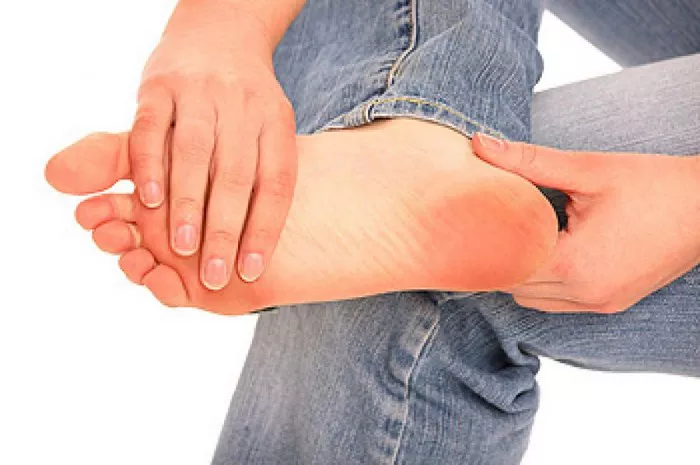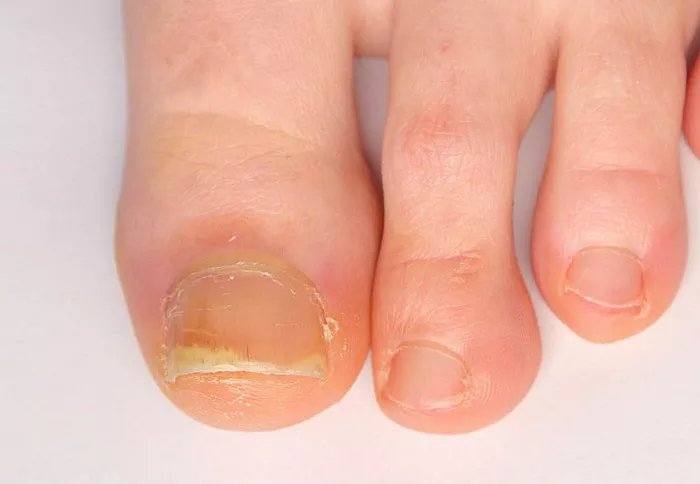Psoriatic arthritis (PsA) is a chronic autoimmune condition that affects millions worldwide, characterized by inflammation of the joints and skin. Among its varied manifestations, the involvement of the feet can significantly impact an individual’s mobility and quality of life. Understanding the symptoms of psoriatic arthritis in the feet is crucial for timely diagnosis and effective management.
The Complexity of Psoriatic Arthritis
Psoriatic arthritis presents a complex clinical picture, often overlapping with other rheumatic conditions such as rheumatoid arthritis and ankylosing spondylitis. Its hallmark features encompass joint pain, swelling, and stiffness, accompanied by skin manifestations like psoriasis plaques. However, the disease’s heterogeneity extends beyond these conventional symptoms, affecting diverse body systems, including the feet.
Feet: A Common Site of Psoriatic Arthritis Manifestation
The feet are particularly vulnerable to PsA involvement due to their intricate structure and constant weight-bearing function. The disease can affect various foot structures, including the toes, ankles, and Achilles tendon, leading to a spectrum of symptoms that significantly impair mobility and daily activities.
Toe Involvement: Dactylitis and Nail Changes
One of the distinctive features of psoriatic arthritis in the feet is dactylitis, commonly referred to as “sausage digit.” This inflammatory swelling affects entire digits, causing them to resemble sausages. Dactylitis can involve multiple toes simultaneously, resulting in pain, tenderness, and limited range of motion.
Moreover, psoriatic arthritis often manifests with nail changes, termed psoriatic nail dystrophy. Affected nails may display pitting, ridges, discoloration, crumbling, or separation from the nail bed. These alterations not only compromise the aesthetic appearance but also contribute to discomfort and functional impairment.
Joint Involvement: Pain and Swelling
Psoriatic arthritis frequently targets the joints of the feet, leading to pain, swelling, and stiffness. The metatarsophalangeal joints, located at the base of the toes, are commonly affected, resulting in a characteristic symptom known as “podagra.” This condition mimics gout, causing severe pain and inflammation in the big toe joint.
Additionally, PsA can involve the subtalar and ankle joints, leading to difficulty in walking, standing, and performing routine tasks. The inflammation in these weight-bearing joints exacerbates pain, particularly after periods of rest or prolonged activity, and may be accompanied by warmth and redness over the affected areas.
Tendon and Ligament Involvement: Achilles Tendinitis
The Achilles tendon, which connects the calf muscles to the heel bone, is frequently affected in psoriatic arthritis, leading to Achilles tendinitis. This condition presents with pain and swelling at the back of the heel, often worsened by physical activity or prolonged standing. Untreated Achilles tendinitis can predispose individuals to tendon rupture, necessitating prompt intervention and rehabilitation.
Furthermore, PsA can involve other foot tendons and ligaments, leading to conditions like plantar fasciitis. This inflammatory disorder affects the thick band of tissue (plantar fascia) that supports the arch of the foot, causing heel pain and stiffness, particularly with the first steps in the morning or after prolonged sitting.
Impact on Mobility and Quality of Life
The cumulative effect of psoriatic arthritis on the feet significantly impairs mobility and diminishes quality of life. Individuals may experience difficulty walking, standing, or wearing shoes comfortably, leading to functional limitations and social withdrawal. Furthermore, the chronic pain and disability associated with PsA can contribute to depression, anxiety, and overall psychological distress.
Differential Diagnosis and Diagnostic Challenges
Diagnosing psoriatic arthritis in the feet can be challenging, primarily due to its overlapping clinical features with other rheumatic conditions and the variable presentation of foot symptoms. Differential diagnosis may include rheumatoid arthritis, osteoarthritis, gout, and infectious arthritis, necessitating a comprehensive evaluation by a rheumatologist or a podiatrist.
The diagnostic process typically involves a detailed medical history, physical examination, imaging studies (such as X-rays, ultrasound, or MRI), and laboratory tests to assess inflammatory markers and confirm the presence of psoriatic skin lesions. Additionally, the use of diagnostic criteria, such as the Classification Criteria for Psoriatic Arthritis (CASPAR), aids in establishing a definitive diagnosis and guiding appropriate management.
Multimodal Treatment Approach
Management of psoriatic arthritis in the feet requires a multimodal approach aimed at alleviating symptoms, preserving joint function, and improving overall well-being. Treatment strategies may include:
1. Pharmacotherapy:
Nonsteroidal anti-inflammatory drugs (NSAIDs), disease-modifying antirheumatic drugs (DMARDs), and biologic agents (such as TNF inhibitors, IL-17 inhibitors) are commonly prescribed to reduce inflammation and control disease activity. Topical treatments, including corticosteroids and calcineurin inhibitors, may be utilized for psoriatic skin lesions and nail involvement.
2. Physical Therapy:
Targeted exercises, stretching techniques, and orthotic devices help improve joint flexibility, strengthen supporting muscles, and alleviate foot pain. Physical therapists play a vital role in designing personalized rehabilitation programs tailored to individual needs and functional goals.
3. Footwear Modifications:
Wearing supportive footwear with cushioned soles, adequate arch support, and ample toe room can alleviate pressure on inflamed joints and reduce discomfort during weight-bearing activities. Orthotic inserts or custom-made shoe inserts may provide additional support and enhance foot biomechanics.
4. Lifestyle Modifications:
Maintaining a healthy weight, adopting an anti-inflammatory diet rich in fruits, vegetables, and omega-3 fatty acids, and avoiding excessive alcohol consumption can help minimize disease flares and promote overall well-being. Smoking cessation is particularly important, as smoking has been linked to worsened disease outcomes and decreased treatment response in psoriatic arthritis.
5. Psychosocial Support:
Counseling, support groups, and cognitive-behavioral therapy can help individuals cope with the emotional challenges associated with chronic illness and foster resilience and self-management skills.
Prognosis and Long-Term Outlook
The prognosis of psoriatic arthritis varies widely among individuals and depends on various factors, including disease severity, response to treatment, and the presence of comorbidities. Early diagnosis and aggressive management are associated with better outcomes, including reduced joint damage, improved function, and enhanced quality of life.
However, psoriatic arthritis is a chronic condition that requires lifelong management and regular monitoring to prevent disease progression and minimize complications. Close collaboration between rheumatologists, dermatologists, podiatrists, physical therapists, and other healthcare providers is essential to optimize treatment outcomes and ensure comprehensive care for individuals with PsA.
Conclusion
Psoriatic arthritis poses significant challenges for individuals affected by its diverse manifestations, particularly in the feet. Recognizing the symptoms of PsA in the feet, including toe involvement, joint inflammation, tendonitis, and nail changes, is crucial for timely diagnosis and effective management. A multidisciplinary approach encompassing pharmacotherapy, physical therapy, lifestyle modifications, and psychosocial support is essential to mitigate symptoms, preserve joint function, and improve overall quality of life for individuals living with psoriatic arthritis.
























